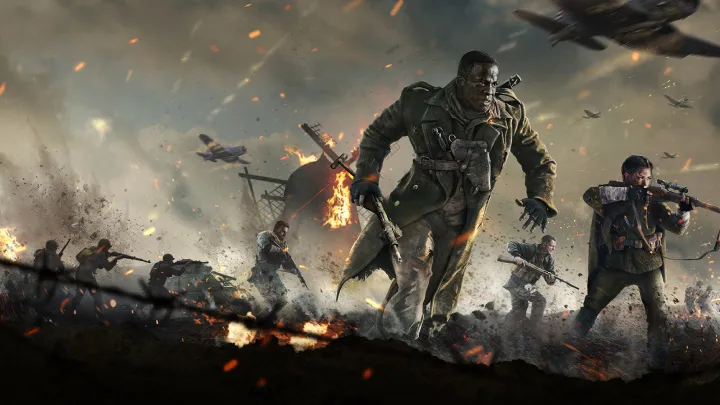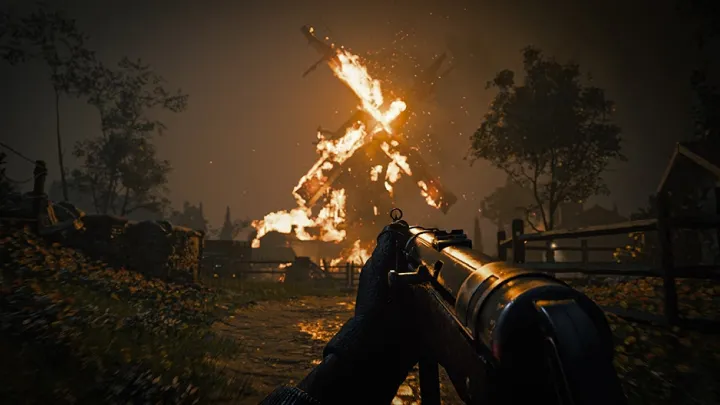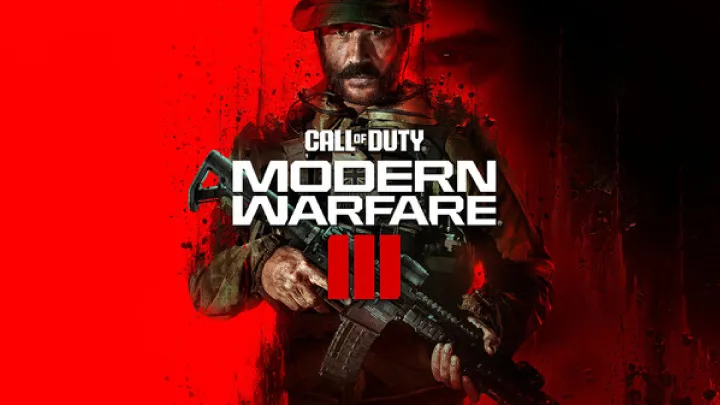Introduction
Call of Duty Vanguard continues the franchise’s tradition of immersing players in the intensity of war, but this installment uniquely focuses on grounding its narrative in World War II’s historical realities. Unlike previous titles that leaned heavily on cinematic spectacle, Vanguard attempts to deliver a more human-centered experience, balancing authenticity with entertainment. The specific issue that defines this game is its struggle between realism and playability—how much historical truth can be integrated into a fast-paced shooter without overwhelming players or compromising enjoyment? This article explores that tension deeply, tracing the progression of realism across the campaign, multiplayer, and cooperative experiences.
The First Mission – Setting the Tone of Realism

The opening mission of Vanguard throws players directly into the chaos of war. Explosions, gunfire, and frantic commands create a suffocating atmosphere.
At this stage, the realism is most striking in its sensory overload. The game designers rely on historically accurate soundscapes, weapon mechanics, and visual detail to make players feel disoriented, much like real soldiers in combat. This sets the foundation for the psychological weight of the entire campaign.
Historical Accuracy vs. Game Design Needs
While Vanguard uses authentic weapons and locations, it must also streamline experiences for gameplay. Reload speeds, ammunition availability, and soldier stamina are balanced for fairness rather than realism.
This raises the central question: should a game prioritize absolute authenticity, or is a compromise necessary to maintain fun? Vanguard walks this fine line, providing historical immersion without frustrating players with too much realism.
Character Development and Humanizing Soldiers
The campaign introduces diverse protagonists, each from different Allied nations. Their personal stories and emotional struggles add depth beyond the battlefield.
This humanization is where Vanguard leans into realism most effectively. Players are not just fighting enemies; they are experiencing the burdens of soldiers who carry loss, fear, and resilience into combat. The narrative anchors the game in human experience rather than pure action.
The Impact of Environmental Storytelling
The game’s environments—bombed-out cities, snowy forests, and war-torn villages—are more than just backdrops. They tell silent stories of destruction, displacement, and despair.
Players encounter ruined homes, abandoned belongings, and scarred landscapes. These visual cues remind them that war affects civilians just as much as soldiers, grounding the game’s battles in tragic context.
Realism in Weapon Mechanics
Vanguard emphasizes historically accurate weapon handling. Each rifle, submachine gun, and sniper has weight, recoil, and distinct characteristics.
This attention to detail deepens immersion but also slows down gameplay compared to futuristic Call of Duty titles. Some players welcome this authenticity, while others struggle with the learning curve. This tension illustrates the challenge of balancing realism with accessibility.
Multiplayer – When Realism Meets Competitive Balance
In multiplayer, realism must adapt to speed and fairness. Weapons remain historically inspired, but progression systems, perks, and killstreaks inject modern mechanics.
Here, realism gives way to balance. While the aesthetic remains World War II-themed, competitive gameplay demands systems that diverge from strict authenticity. The player experience becomes less about history and more about strategy.
Cooperative Modes and the Psychology of Fear

The Zombies mode provides a stark contrast to the realism of the campaign. Here, supernatural enemies replace historical accuracy, but the atmosphere still leverages wartime imagery.
Even in this fictional mode, Vanguard uses realism—ruins, period weapons, and grim settings—to anchor players in dread. The tension between real-world tragedy and supernatural horror creates a unique emotional blend.
The Emotional Toll of Narrative Choices
Certain campaign missions force players into morally complex scenarios, such as witnessing civilian suffering or losing comrades. These moments highlight the cost of war beyond statistics.
By weaving emotional consequences into gameplay, Vanguard elevates realism beyond visual fidelity. Players feel the psychological strain of combat, even if only in fragments.
Reception and Player Reactions to Realism
Vanguard’s community has been divided over its approach. Some praise its attempt to honor history, while others criticize it for diluting realism with arcade-like mechanics.
This reflects the broader debate in war games: should they educate, entertain, or both? Vanguard attempts to bridge these goals, but not all players interpret this balance the same way.
The Lasting Impact of Vanguard’s Realism
In the end, Vanguard succeeds in reminding players that World War II was not just a battlefield but a human catastrophe. Its realism is imperfect but intentional, offering a window into both the horrors and heroism of war.
By blending historical authenticity with engaging mechanics, the game ensures that players experience more than just action—they confront the emotional and psychological shadows of history.
Conclusion
Call of Duty Vanguard is more than another entry in the franchise; it is an experiment in balancing realism and playability. While it cannot fully replicate the horrors of World War II, it succeeds in embedding traces of humanity, sorrow, and authenticity into its campaign and environments. By doing so, it challenges players not just to shoot, but to reflect on what those battles meant in reality. Its legacy lies in its attempt to blend entertainment with remembrance, creating a war game that unsettles as much as it thrills.

















